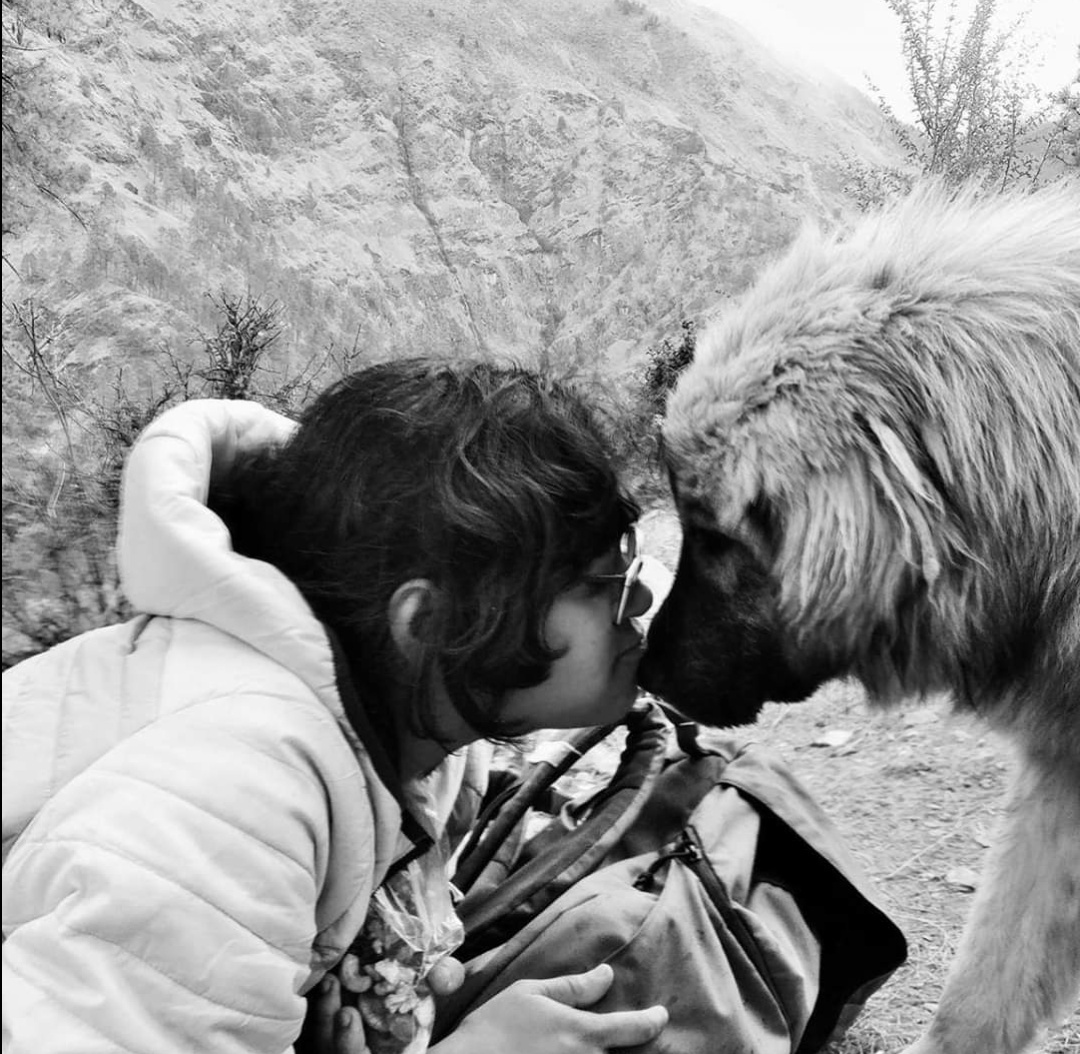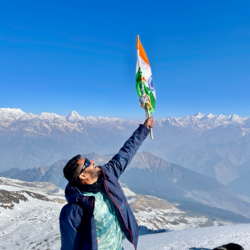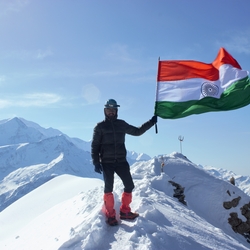What The Great Gatsby is to literature, Annapurna Circuit is to trekking – a classic! Annapurna Circuit Trek is 155 kilometers of sheer awe. With constantly changing landscapes, shifts in temperature, the massive peaks with boisterous personalities and the comings and goings of the exuberant winds, there’s never a dull moment on this long but magnificent trek. Although each day is long with an average of 12-15 kms per day, the constant change in scenery alternating between raw wilderness with wild horses and yaks silently going about their day and a peek into the high-mountain living culture with small hamlets scattered across the landscape, it is very hard to get bored of your surroundings on this trek. As the trails go up, down and around the many mountain faces mimicking the meandering Marshyangdi river down below, the clouds do their bit to keep you entertained playing a game of hide and seek with the harsh afternoon sun. Trekking in Nepal is an experience unparalleled and to experience Annapurna Circuit trail is to witness the best of Nepal.
Read: Highlights of Annapurna Circuit Trek
Annapurna Circuit Trek takes you to an elevation of over 5,400M at Thorang La Pass which connects the green and beautiful Manang Valley (in the east) to the even more gorgeous but distinct Mustang Valley (in the west). Apart from it being a popular route frequented by a flock of trekkers each year, this high-mountain pass is still used by local traders to get suppliers from one region into the other. The trek is usually done from east to west that is from Manang to Mustang, but can also be attempted from west to east although this route forces you to gain elevation very rapidly and leaves very little room for fair acclimatization. No matter which route you dare to pick, the journey is sure to leave you speechless.

Difficulty Level of the Trek:
Annapurna Circuit Trek is a level 5 trek on the Bikat Rating Scale.
About the BRS: The Bikat Rating Scale rates the difficulty level of all treks and expeditions in our portfolio after taking into account their geographical and climatic conditions.
According to this scale, if you are a beginner who is unsure of your fitness level and don’t know what to expect on a trek, a trek rated one will be a good place to start.
If you liked your very first trekking experience and are looking to test your limits next, the treks rated 2 or 3 will do the job for you.
A beginner who is sure of their fitness level on the other hand is welcome to skip the first two levels and directly start with one of the treks rated 3.
From 4 onwards, the rules change a little. It is mandatory to have trekking experience of the previous level to participate in the next level.
The Trails of Annapurna Circuit Trek:
Starting from the capital city of Nepal, Kathmandu, you are in the middle of giants on touchdown into the country. Following the drama of the Marsyangdi River as it unhesitatingly cuts its way through the Himalayas, the trail takes you through two separate river valleys crossing over from one to the other through the highest point of the trek, Thorang La Pass – which lies at the edge of the Tibetan Plateau at an elevation of 5,416M. Although fairly manageable overall, it comes with its fair share of challenges and it helps to know what some of the difficulties you are likely to encounter are, if you decide to undertake this journey. Let us help acquaint you to some of the most exciting ones which make the trek challenging as well as fun!

Challenge 1: Climactic Zones
Annapurna Circuit Trek is unique for its climatic zones starting from the tropics, smoothly rising up going through the forests to high-altitude glacial lakes like Ice Lake and Tilicho Lake. The trail which takes you around the Annapurna Massif presents you with an assortment of terrain starting from the jungle-strewn foothills that slowly transform into loose, crumbling mountains that take you further up to the cold, barren, rocky lands exposed to strong winds and harsh sun. For its constantly changing terrain each with its own environment, some humid, some bone dry and some open lands with ferocious winds, the trail demands constant adapting to the quickly changing climactic conditions.
Read: Out, About and Around the Annapurna Massif: A Photo Story

Challenge 2: Acclimatization
The trek starts from the high mountain city of Kathmandu at 1,400M and takes you to the higher reaches of the Himalayas in a short period of 12 days, post which we begin to come down. Since we are moving quickly from the high-altitude town into the land of fifty shades of white, acclimatization is crucial to completion of the trek and a safe return.
The weather on the trail of Annapurna Circuit Trek has a way of surprising us, too. With its sudden twists, we never know when we will be hit by extreme and burning heat, to our next snow storm, white-out or torrential rains - which makes the trek thrilling while also, adding to its level of difficulty. This constantly changing weather as pointed out before, in addition to the gain in elevation and the peculiarities of each region of Nepal that we cross on this trek, adapting to newer heights becomes a tricky business. Watch out for any signs of depleting health and Altitude Mountain Sickness.

We have seen quite a few fit trekkers experience extreme fatigue, head ache, and nausea on this trail. So, the battle against altitude is not one you would want to take lightly on the Annapurna Circuit Trek.
Do remember to drink lots of water, layer up as instructed by the leader and take the climb at your own pace. These simple but effective strategies can help keep all altitude related discomforts at bay.
Challenge 3: Nature of the trail
Although not a technical trek which would require the use of technical mountaineering equipment or climbing skills, one of the challenges of this trek is long distances and peculiar terrain. There are some days on this trek which run really long where we will cover as much as 12-15 kms in a day – while this is normal for most treks to have one or two such days, this is the average distance on ACT for most days, making it an exhausting endeavor especially given the altitude the trek takes you to.

Another challenge of the trek is its terrain – with a mix of extremely steep slopes to rocky patches and boulder sections to dusty roads to crumbling mountains to walking for miles in snow. Add this rough and changing landscape to the distances to be covered for each day, and every day on the trek starts to seem a little difficult one day after the next.
Challenge 4: Two Climaxes:
Of its many features that make Annapurna Circuit Trek unique, one is that it has two days which are extremely demanding. Usually treks have one climax which is either the summit day or the day you cross the pass or the day when you reach the highest point of the trek. These days require you to wake up in the dead of the night and trek through darkness along long stretches. These usually make for the toughest, most thrilling and longest days on the trek and the ones most looked forward to with the best views awaiting your arrival - the days for which you conserve all your energy.

Annapurna Circuit Trek needs a bit more of a complex calculation in context to your energy reserves for it has two such days – one where you trek to Tilicho Lake which takes you to a height of over 4,900M on Day 9 of the trek. This is a 10 hour long arduous undertaking which begins at 0430 AM and requires you to cover close to 18 kms in a single day through difficult terrain and challenging environment. The second of its climaxes comes on Day 12 when we go to the highest point of the trek at Thorang La Pass (5,416M). The trek on this day starts at 4 in the morning with a steep and continuous ascent up to the pass and an extremely long descent to Muktinath on the same day.

For more details on the route and terrain for each day, read the detailed itinerary for Annapurna Circuit Trek
GEAR REQUIRED FOR ANNAPURNA CIRCUIT TREK
While it is not a technical trek and does not require any technical equipment, there is some basic gear you will need from your end to get through your hike comfortably.
Some of the things you will need are:
1) A sturdy, lightweight backpack: A good backpack which sits comfortably on your back without putting too much pressure on it can be the deciding factor between making it to the summit or not. Good, however, is not a synonym for expensive.
One of our founders, Pankaj, purchased a non-branded pack for INR 1100 in 2010 and the pack continues to work just fine for him even today. In the article linked below, he shares some helpful tips on what to look for when choosing a trekking backpack.
2) Comfortable trekking shoes: Happy feet equal a happy trek. Conventional sports shoes don’t suit trekking trails. We recommend wearing high ankle shoes with sturdy soles. These not only provide better support but also reduce the possibility of injuries while hiking. In case, you need help with a list of deciding factors that make for good trekking shoes, please refer to the article below.
How to choose a good pair of hiking shoes
3) Right Clothing: Any high-altitude trek requires specific kinds of clothing. It should be warm but light weight. It should also be such that it is easily packaged. On high-altitude treks like Annapurna Circuit Trek, we usually employ the layering method where you put on multiple layers of clothing instead of one very heavy, thick jacket. This is for two reasons:
1) The weather in Himalayan regions is unpredictable and changes very quickly. Layering gives you the freedom to adapt to that accordingly where you are not left feeling too hot or too cold.
2) These are easy to carry and are packing-friendly.
4) Right Sunglasses: When you know you are going to be in and around snow or in any high-altitude location where the sun is harsh, you might want to carry a good pair of sunglasses. A lack of these could prove to be fatal. The article below can help you pick out just the right pair.
How to pick high-altitude UV protection glasses?
SKILLS REQUIRED FOR ANNAPURNA CIRCUIT TREK
Bikat Adventures is primarily an adventure learning organization. This means our key objective is not just to help trekkers complete their treks but also to ensure they pick up some valuable lessons and skills in trekking along the way.
To achieve this, we have created learning modules and paired them to different levels on the Bikat Rating Scale.
These modules are taught real-time on the trails by our trek leaders.
The following are some skills that are likely to come in handy on a trek like Annapurna Circuit.
While you will have all the assistance you need on the trek from our capable trek leaders and guides, we suggest browsing through the articles below to get an idea of what is involved.
1) Ascending Descending on Trails
Annapurna Circuit Trek is full of steep ascents and equally steep descents. While ascending and descending on a rocky terrain is difficult, achieving this on icy slopes is trickier. A set of simple techniques can help you navigate rocky as well as icy landscapes with considerable ease while also reducing chances of injuries and stress to specific body parts. The guide linked below shares some useful tips on how to ascend and descend on trails.
Ascending and Descending on Trails
Here is an additional article for some more in-depth information specific to an icy terrain.
Ice-craft Basics: Glacier Travel
2) Packing Your Rucksack
Given how unpredictable the weather gets on Annapurna Circuit Trek, you are likely to keep changing your layering frequently along the way. Also, due to the vast difference in day temperature and that at night, you most probably will spend a lot of time packing and re-packing your sack.
Accessing your stuff can get a bit messy and confusing during this process.
A sack packed right can facilitate your trekking while incorrect packing can make even an easy trail seem difficult. Worry not, we are here to help. The article linked below shares some useful guidelines you can follow to pack efficiently.
3) Layering Basics
Layering appropriately to protect you from the cold is essential. The article linked below will give you a fair idea of the winter layers you will need and guide you on how to layer up at campsites and while hiking.
4) Waste Management
When on any trek, it is each person’s responsibility to know the requirements of the area, some campsite basics and how to manage our own selves as well as the environment around us. While our trek leaders will keep you abreast about the basic dos and don’ts, do read the article below to brush up on some basic principles before the trek.
Waste Management and Leave No Trace Principles
We hope this article answers all the questions you may have about Annapurna Circuit Trek. In case you need further assistance/information with something, please feel free to reach out to us. We are only a phone call away.






